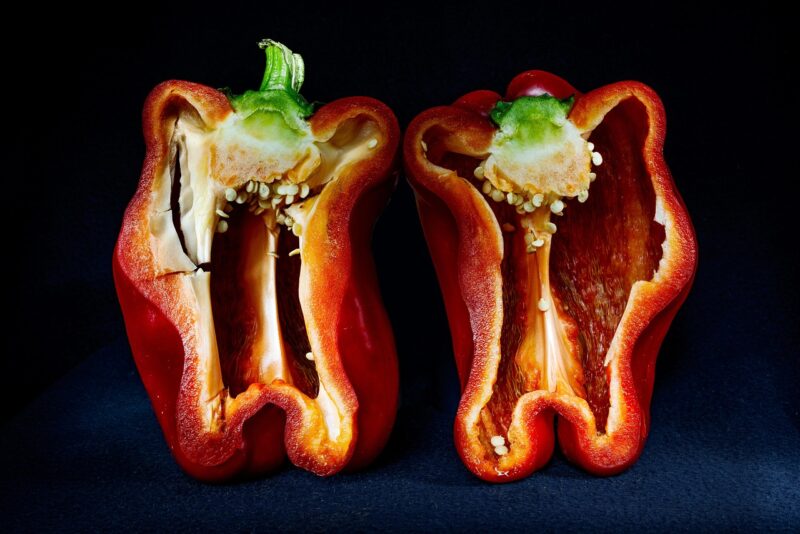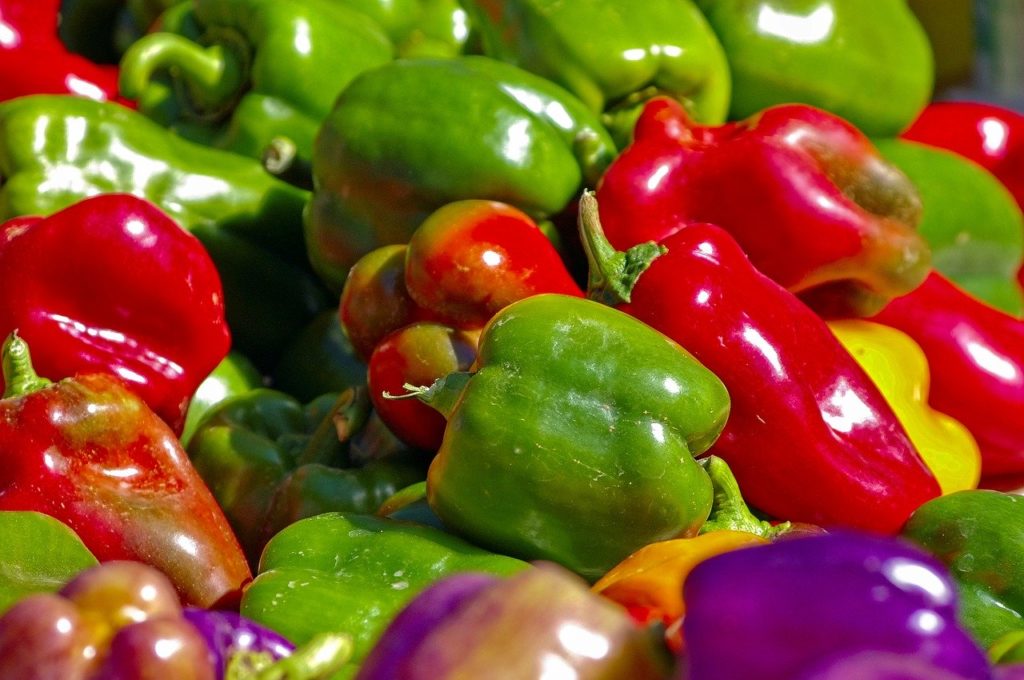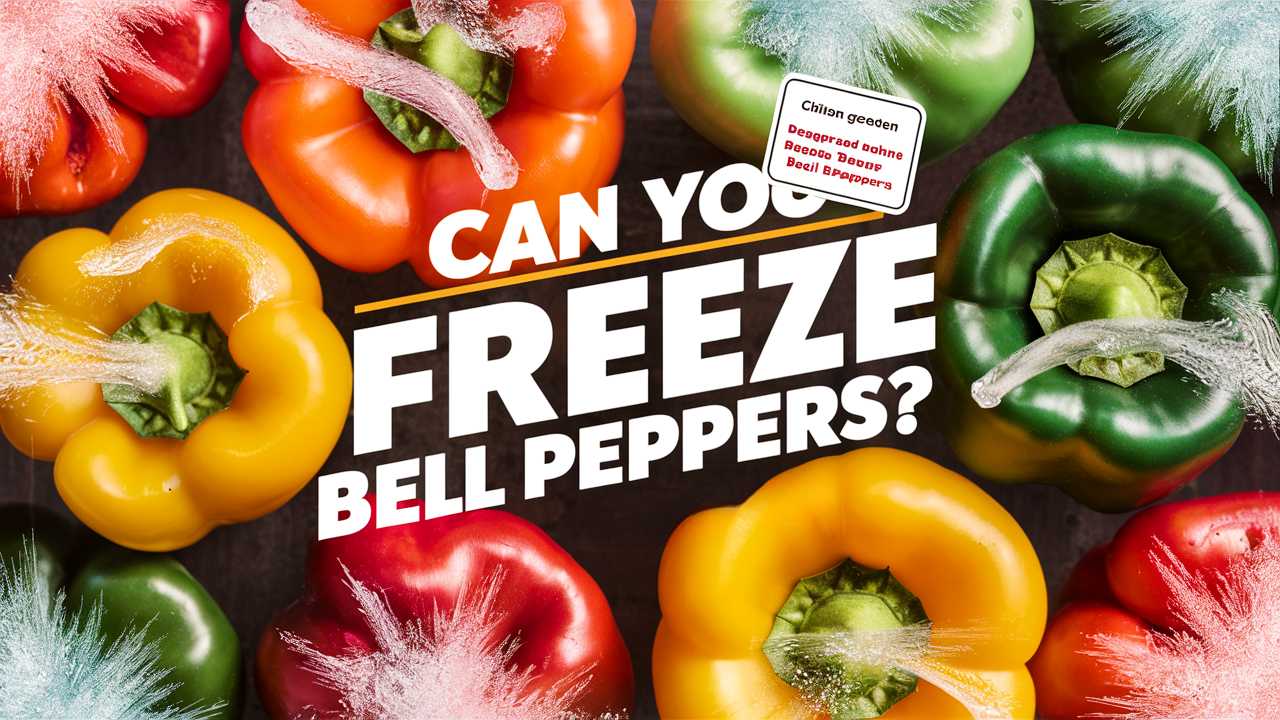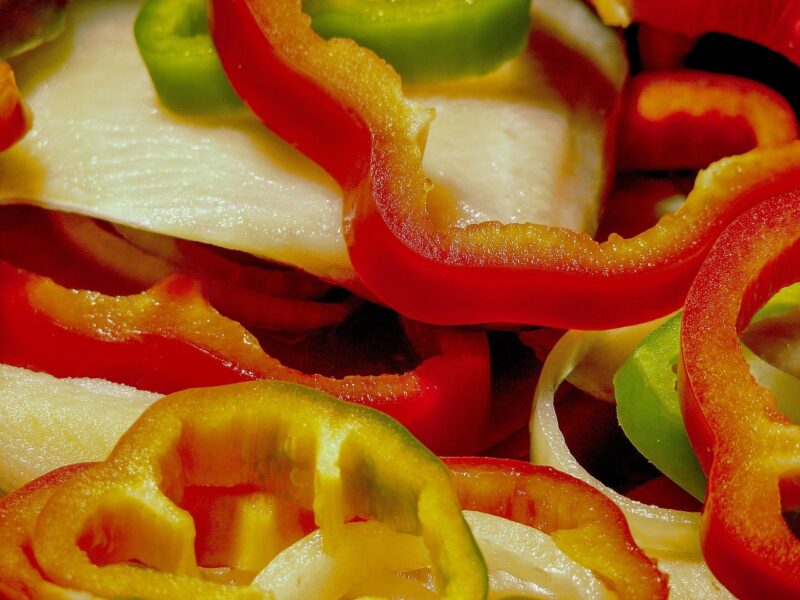Can you freeze bell peppers? This blog post takes a comprehensive look at this question, laying out not only the answer but also providing a wealth of knowledge surrounding the freezing process, preparation tips, and culinary ideas for using frozen bell peppers.
The Freezing Process: How to Freeze Bell Peppers

Freezing bell peppers is not only possible but also quite straightforward—provided you take the right steps. Here’s a detailed guide to freezing bell peppers that retains flavor and texture.
Step 1: Choosing the Right Peppers
Start by selecting fresh, firm bell peppers without any signs of spoilage. Look for ones with smooth skin and bright colors, which typically indicates higher nutrient levels and better flavor.
Step 2: Preparing the Peppers
Wash: Rinse the peppers under cold water to remove any dirt or pesticides.
Core and Seed: Cut the tops off, remove the seeds, and discard the stem. You can also slice the peppers into strips, dice them, or leave them whole, depending on how you plan to use them later.
Blanch (Optional): While not mandatory, blanching bell peppers can help preserve their color, flavor, and texture. To blanch, bring a pot of water to a rolling boil. Submerge the prepared peppers for about 2-3 minutes, then immediately transfer them to a bowl of ice water to halt the cooking process.
Step 3: Packaging for Freezing
Drain: After blanching, ensure the peppers are thoroughly drained and pat them dry with a kitchen towel.
Portioning: Place the peppers in portioned amounts in freezer bags or airtight containers. This way, you can take out exactly what you need later without thawing the entire batch.
Label and Date: Don’t forget to label the bags or containers with the contents and the date, as frozen bell peppers are best used within 6 to 9 months.
Step 4: The Freezing Process
Lay the bags flat in the freezer initially; this helps them freeze evenly and saves space. Once frozen solid, you can store the bags upright.
Benefits of Freezing Bell Peppers

Freezing not only allows you to enjoy bell peppers year-round but also contributes to reducing food waste. Here’s a closer look at the benefits:
Nutritional Preservation
Freezing can lock in the nutrients—certain vitamins may degrade over time, but when you flash-freeze fresh produce like bell peppers, you can significantly slow that process. This means you can enjoy those health benefits even months after harvest.
Cost-Effective Kitchen Staple
Buying bell peppers when they are in season often means they’ll be cheaper, and freezing them can help you make the most of these savings. Instead of splurging on imported or off-season produce, you can reach into your own frozen stash.
Convenience and Versatility
With frozen bell peppers readily available, meal prep becomes a breeze. Toss them into stir-fries, casseroles, soups, or even omelets without worrying about their freshness.
Thawing and Cooking with Frozen Bell Peppers
While freezing bell peppers is easy, it’s equally important to understand how to properly thaw and cook with them. Here’s a quick guide:
Thawing Methods
Slow Thaw in the Fridge: This method takes the longest but preserves texture and taste. Just transfer the desired amount to the refrigerator a few hours or overnight.
Quick Thaw: If you’re short on time and need to cook with them right away, you can use the microwave on the defrost setting.
Cook from Frozen: In many recipes, you can add frozen bell peppers directly to the cooking process without thawing. In stir-fries, for example, they will thaw quickly from the heat of cooking.
Culinary Ideas
Once thawed, frozen bell peppers can be wonderfully versatile. Here are a few creative ideas for utilizing them:
Stir-Fried Rice Dishes: Frozen bell peppers meld perfectly into fried rice, adding color and nutrition.
Soups and Stews: Toss them into the pot for a hearty and flavorful addition.
Stuffed Peppers: You can even use frozen peppers for stuffing with rice, meat, or quinoa mixtures. Just add a few extra minutes to your cooking time to ensure everything heats through.
Common Questions About Freezing Bell Peppers
As with any topic, there are often lingering questions that arise. Here are some of the most common inquiries about freezing bell peppers along with their answers.
Can You Freeze Whole Bell Peppers?
Yes, you can freeze whole bell peppers, although it’s generally advisable to slice or chop them for convenience. Whole peppers will take longer to thaw and cook, which may impact their texture.
Will Freezing Bell Peppers Change Their Texture?
Yes, frozen bell peppers may lose some of their crispness once thawed. While blanching can help maintain their structural integrity, they won’t retain the perfect crunch of a fresh pepper. Cooking them in dishes like stir-fries or soups will minimize any textural issues.
How Long Can You Store Frozen Bell Peppers?
For the best quality, aim to use frozen bell peppers within six to nine months. They’re safe to eat indefinitely if kept at 0°F, but flavor and texture may diminish over time.
Can You Refreeze Bell Peppers?
It’s not recommended to refreeze bell peppers once they have been thawed. Doing so can lead to further textural degradation and may affect flavor quality.
Changing Perspectives: A Personal Touch
In my own culinary adventures, I often find inspiration in the unexpected, such as gleaning wisdom from my grandmother’s kitchen. Growing up, she taught me the importance of preserving the harvest—whether it was through pickling cucumbers or freezing excess vegetables from her garden. Bell peppers were always her favorites, and she would spend Saturday mornings roasting, chopping, and freezing them for delightful winter meals.
Her adage still rings true in my baking and cooking philosophy: fresh produce in—warm meals out. Freezing bell peppers has become a practice in my kitchen not just out of convenience but as a homage to her teachings. Each time I pop open a bag of frozen peppers mid-winter, I’m reminded of her laugh and the comforting meals we shared.
Creative Uses for Frozen Bell Peppers in Everyday Life
Bringing frozen bell peppers into your culinary repertoire invites a world of creativity. They can transform simple meals into magnificent feasts and offer solutions for busy weeknights or unexpected guests.
Prep-ahead Dinners: Incorporate them into easy sheet-pan dinners. Pair frozen bell peppers with your choice of protein and seasoning, roast them all together, and enjoy.
Breakfast Boosts: Whip up a quick omelet or frittata with frozen peppers. The heat from the eggs will thaw and cook them just right for a delicious morning meal.
Salsas and Sauces: Experiment with blending frozen peppers into salsas or sauces. Their smoky, roasted flavor complements various culinary profiles.
Enhancing Meals with Flavor Profiles
Don’t be afraid to get experimental. Frozen bell peppers can complement a wide array of cuisines:
Mexican: Mix frozen bell peppers with black beans, corn, lime, and spices for a vibrant side dish.
Italian: Place them in ravioli or pasta salads, coupled with olive oil, garlic, and Parmesan.
Mediterranean: Use them alongside chickpeas, olives, and feta in a grain bowl for a delightful lunch.
Conclusion: The Vibrancy of Frozen Bell Peppers
Freezing bell peppers is not just a practical solution; it’s a culinary art form. With the right techniques and a bit of creativity, you can create beautiful, nutritious meals year-round. From their bright colors to their myriad of uses, frozen bell peppers open up endless possibilities in the kitchen.







